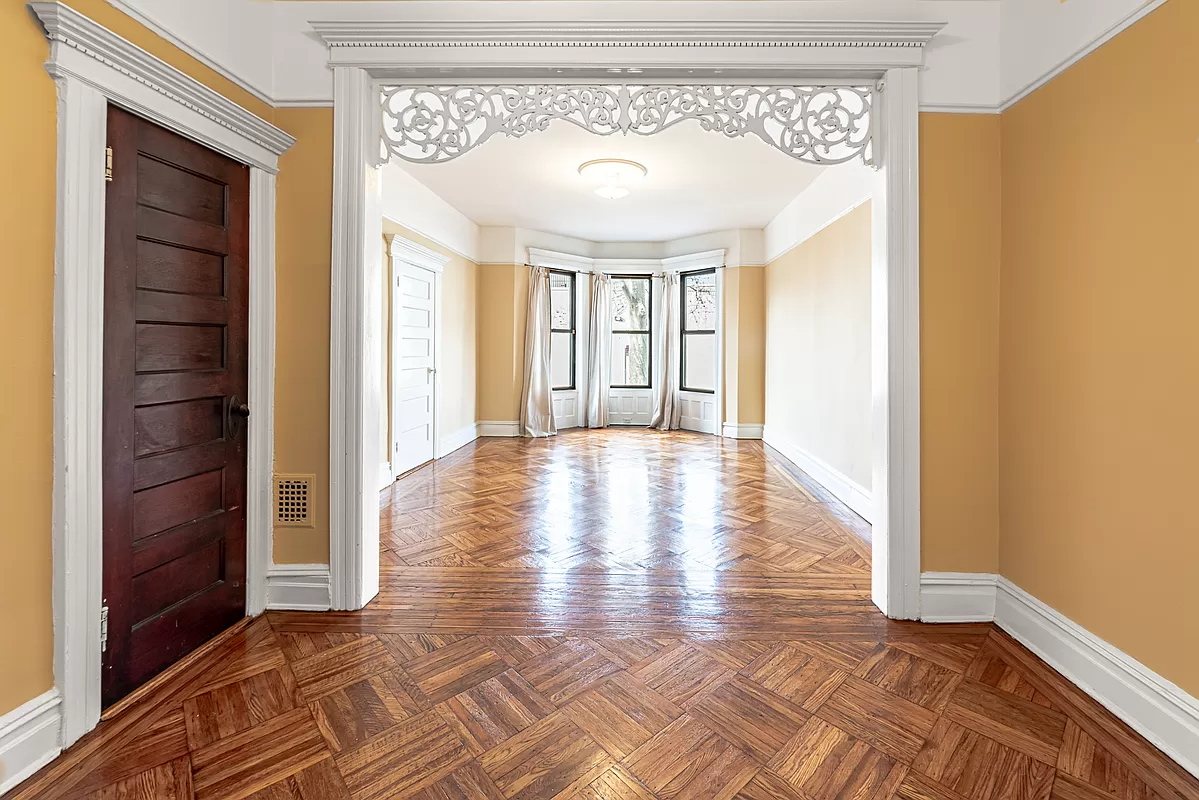Building of the Day: 1020 Bushwick Avenue
Editor’s note: An updated version of this post can be viewed here. Brooklyn, one building at a time. Name: Private House Address: 1020 Bushwick Avenue, corner of Linden Street Neighborhood: Bushwick Year Built: 1888 Architectural Style: Queen Anne Architect: Frank Keith Irving, aka F.K. Irving, Frank K. Irving Other buildings by architect: QA row next…

Editor’s note: An updated version of this post can be viewed here.
Brooklyn, one building at a time.
Name: Private House
Address: 1020 Bushwick Avenue, corner of Linden Street
Neighborhood: Bushwick
Year Built: 1888
Architectural Style: Queen Anne
Architect: Frank Keith Irving, aka F.K. Irving, Frank K. Irving
Other buildings by architect: QA row next door: 37-53 Linden St.
Landmarked: No, but hopefully rectified soon.
The story: It is not uncommon to begin a row of houses with a distinctive anchor house on a corner, but few rows are as architecturally and visually interesting as this Bushwick group. The corner house is a story taller than its fellows stretching down Linden Street, due to the mansard roofline, but it shares many of the same details: warm red bricks and a wealth of terra-cotta, pressed metal, wrought iron and stained glass ornament.
This is one impressive urban Queen Anne, and a classic of the genre. Let’s start at the top. The slate covered Mansard roof with dormers and wrought iron cresting are a common feature in Second Empire architecture, popular 15 or 20 years earlier, but often a staple of the QA portfolio.
And why not? A Mansard roof adds another story without looking obvious, and the dormers give Irving a chance for ornamentation and embellishment, all nicely done. Check out the expressive face on the front dormer. The wrought iron filigree cresting is pretty, and relates to the other wrought iron in this building and the entire row.
Even the twin chimney stacks are attractive with artfully pattered brick, positioned to perfectly frame the dormer, before traveling artfully down the front of the house. I wonder what the fireplaces look like.
While all of the houses are encrusted with bands of terra-cotta, in heavy, thickly entwined vine patterns, the corner house goes one better. The upper band, below the cornice has an added motif of twin dragons popping out of the vines as they run across the length of the building.
These dragons are a repeated theme, appearing in the terra-cotta spandrels below the parlor floor windows, and in the wrought iron balcony above the door. The side of the house, on Linden Street, is complementary to the other Linden houses, with similar terra-cotta, but the added brick pilasters (relief columns) with even more opportunity for ornamentation, set it apart.
(Note the little added goodie here: the tiny arches above the lower set of pilasters.) The stained glass window on the third floor, and transom panels are further jewels on this house.
At some point in its history, the house belonged to a doctor, and perhaps at this time the original front entrance was altered to accommodate his practice. I think the house originally had a dog leg stoop like its neighbors, leading to the parlor floor.
This current entrance makes no sense, design wise, or aesthetically, and the window on the parlor floor above the door is out of scale with the rest of the building. Irving was so careful with every other small detail; he would not have done this doorway, which is the very heart of good streetscape design.
Fortunately, they preserved the balcony, which may have originally been part of the railing on the stoop. Whoever did do it probably also made the wall leading to the garage, on Bushwick Avenue. They matched the brick pattern, and made a lovely octagonal window peeking into the garden, with a wrought iron caduceus inset in the middle.
All in all, this is a magnificent house. I hope the inside was as preserved as the outside. Can we please landmark this house, as well as its neighbors?
There are too many details to show here. Check out more on my Flickr page.













So wonderful, MM!
Also, I love that someone in this house has a huge collection of vinyl records up to the ceiling in one room.
I meant it was spelled wrongly in the photo caption.
Very nice story–I must go out to Bushwick Ave. someday. One nit pick: It’s “caduceus”.
Bushwick Ave is a real treat. The iron work is quite special.
the terra-cotta work here is very excellent. The whole house is dreamy and yes, MM, I agree that the original entrance was on the parlor level, flanked by those two great chimneys, and on top of a massive stoop.